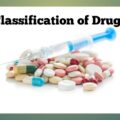What’s Asthma? Bronchial asthma is a chronic inflammatory disease of the airways characterized by bronchial hyperreactivity and a variable degree of airway obstruction. It is diagnosed on the basis of clinical history, physical examination, and pulmonary function tests, including reversibility testing and measurement of bronchial reactivity. The goal of treatment is to control the symptoms of the disease effectively and in a lasting fashion. Long-term treatment with inhaled corticosteroids is the basis of asthma treatment. See Cetirizine Hydrochloride and Pseudoephedrine Hydrochloride,
Airway obstruction in bronchial asthma is mainly caused by the following four mechanisms
- Contraction of bronchial smooth muscle
- Edema of the airway walls
- Mucous plugging of the bronchioles
- Irreversible changes in the lungs (“remodeling”)
Bronchial asthma afflicts about 10% of children and 5% of adults. An atopic diathesis, i.e., a genetic predisposition toward the production of IgE antibodies in response to (for example) pollen, house dust mites, fungi, or animal-derived proteins, is the most important risk factor for bronchial asthma. In childhood, bronchial asthma is usually due to allergies; on the other hand, in 30% to 50% of adults with asthma, no allergy can be identified, at least not with the standard techniques. Non-allergic asthma in adults can arise, for example, after a viral infection of the lower respiratory tract. Viral infections can, in turn, promote the development of allergic sensitization. Intrinsic asthma may reflect the simultaneous presence of sinusitis, nasal polyposis, and an intolerance to acetylsalicylic acid (ASA) or related non-steroidal anti-inflammatory drugs (NSAIDs); this is the so-called Samter’s syndrome. Read: Can Asthma Be Transmitted Through Kissing?
SYMPTOMS
- Reversible airflow obstruction
- Bronchospasm
- Episodes of wheezing
- Coughing,
- Chest tightness,
- Shortness of breath
Worthy of note is the fact that bronchial asthma symptoms have been reported to be worse at night and early mornings
Treatment
The goals of pharmacotherapy are the suppression of the inflammation of asthma and the reduction of bronchial hyperactivity and airway obstruction. The medications used for these purposes belong to two groups namely;
- Medications are taken for symptomatic relief as necessary
- Medications used for preventive, maintenance therapy
Pharmacologic management includes the use of control agents such as
- Inhaled corticosteroids
- Beta 2 agonist short and long-acting bronchodilators
- Theophylline, leukotriene modifiers
- Ipratropium.
- Anti-immunoglobulin E (IgE) antibodies (omalizumab)
See CTN 10 Pills, Uses Side Effects, Precautions
Inhaled corticosteroids
Corticosteroids (or glucocorticosteroids) are widely used to treat various inflammatory and immune diseases. A very common use of corticosteroids globally is in the treatment of asthma, and inhaled corticosteroids have become established as first-line treatment in children and adults with persistent asthma, the most common chronic inflammatory disease. See Asthma Due To Seasonal Allergies icd 10
Beta 2 Bronchodilators (Short and Long-Acting)
β2 (beta2) adrenergic receptor agonists, also known as adrenergic β2 receptor agonists, are a class of drugs that act on the β2 adrenergic receptor. Like other β adrenergic agonists, they induce smooth muscle relaxation. β2 adrenergic agonists’ effects on smooth muscle cause dilation of bronchial passages, vasodilation in muscle and liver, relaxation of uterine muscle, and release of insulin. They are primarily used to treat asthma.
Theophylline & Leukotriene Modifiers
Theophylline
Theophylline is effective in the treatment of acute and chronic asthma in adults and children. Its clinical use has often been suboptimal because of inadequate dose schedules.
Leukotriene Modifiers (Leukotriene Receptor Antagonists)
Leukotriene receptor antagonists, called LTRAs for short, are a class of oral medication that is non-steroidal. They may also be referred to as anti-inflammatory bronchoconstriction preventers. LTRAs work by blocking a chemical reaction that can lead to inflammation in the airways. Although not preferred first choice therapy, LTRAs can be tried when an inhaled steroid can not, or will not, be used, or if the dose cannot be increased.
IPRATROPIUM
Ipratropium is used to treat the symptoms of chronic obstructive pulmonary disease & asthma its action opens up the large and medium airways in the lungs. It is used as an inhaler or nebulizer.
Anti-Immunoglobulin E (IgE) Antibodies (Omalizumab)
Anti-inflammatory agents are effective for many asthma patients, but there are subjects whose disease is hardly controlled by inhaled or systemic corticosteroids and these patients account for about 50% of the healthcare costs of asthma. See 4H2 Pill
Copyright ©
Permission is hereby granted for the use of whole or parts of this article provided appropriate credit is given to www.publichealth.com.ng





